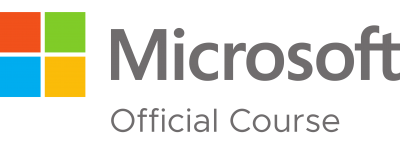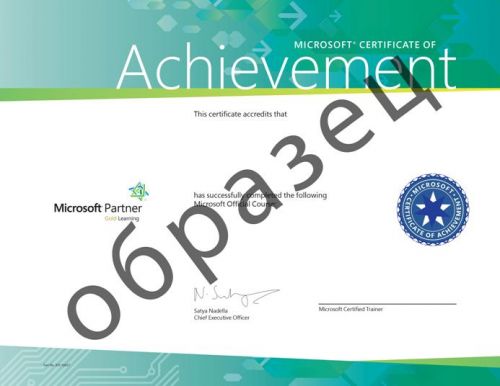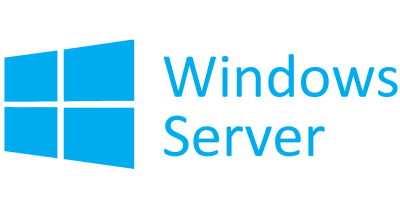Администрирование решений Microsoft Azure SQL (DP-300T00)

Administering Microsoft Azure SQL Solutions
Курс предоставляет знания и навыки, необходимые для администрирования реляционных баз данных в среде MS Azure.
Целевая аудитория
Администраторы баз данных. Профессионалы в области данных, управляющие данными и базами данных, которые хотят узнать об администрировании технологий платформы данных, доступных в Microsoft Azure. Этот курс также полезен для архитекторов данных и разработчиков приложений, которым необходимо понять, какие технологии доступны для платформы данных с Azure и как работать с этими технологиями через приложения.
Предварительные требования
- Знания технологий виртуализации;
- Знания сетевых технологий (TCP/IP, DNS, VPN, межсетевые экраны и технологии шифрования);
- Опыт работы с базами данных SQL Server, включающий создание баз данных, конфигурацию файлов базы и журналов, предназначение журнала транзакций;
- Базовые знания языка SQL, предпочтительно T-SQL;
- Понимание структур таблиц и индексов, знания основных типов данных SQL Server.
Приобретаемые знания и навыки
По окончании курса слушатели смогут:
- Администрировать реляционные базы данных в MS Azure с использованием портала Azure, Cloud Shell, Azure PowerShell, CLI и шаблонов ARM;
- Выполнять развертывание и конфигурирование ресурсов, включающих базы данных и сервера баз данных;
- Настраивать аутентификацию и авторизацию для баз данных;
- Применять политики безопасности для данных в процессе хранения и передачи;
- Выполнять мониторинг производительности сервера и идентифицировать типовые проблемы, связанные с производительностью;
- Выполнять настройку ресурсов для обеспечения оптимальной производительности;
- Выполнять мониторинг и оптимизировать производительность запросов;
- Выполнять автоматическое развертывание ресурсов с использованием скриптов;
- Создавать и управлять задачами, предупреждениями и оповещениями;
- Определять оптимальные стратегии для обеспечения высокой доступности и восстановления после сбоев;
- Планировать и настраивать решение для восстановления после сбоев
Программа курса
Module 1 : Prepare to maintain SQL databases on Azure
- Understand the role of Azure Database Administrator as it fits in with other data platform roles.
- Describe the key differences between the SQL Server-based database options in Azure.
- Describe other features for Azure SQL platforms available.
Module 2 : Deploy IaaS solutions with Azure SQL
- Explore the basics of SQL Server in an Infrastructure as a Service (IaaS) offering
- Learn the available options for provisioning and deployment
- Deploy SQL Server into an Azure Virtual Machine
Module 3 : Deploy PaaS solutions with Azure SQL
- Gain an understanding SQL Server in a Platform as a Service (PaaS) offering
- Understand PaaS provisioning and deployment options
- Understand elastic pools
- Examine Azure SQL Managed Instances
- Explore Azure SQL Edge
- Configure a template for PaaS deployment
Module 4 : Evaluate strategies for migrating to Azure SQL
- Evaluate different Azure migration options when moving your SQL environment to the cloud.
- Understand how SQL Server compatibility level affects database behavior.
- Understand the differences between private and public preview options.
Module 5 : Migrate SQL Server workloads to Azure SQL Database
- Explore the advantages, capabilities, and migration possibilities offered by Azure SQL Database.
- Migrate databases using Azure SQL Migration extension for Azure Data Studio and tracking database migration activities.
- Use the Data Migration Assistant (DMA) tool to facilitate SQL Server migrations to Azure SQL Database.
- Use transactional replication as an online method to migrate to Azure SQL Database.
- Explore several other methods for migrating SQL Server databases to Azure SQL Database.
Module 6 : Migrate SQL workloads to Azure Managed Instances
- Evaluate migration scenarios to Azure SQL Database Managed Instance
- Migrate to Azure SQL Database Managed Instance
- Load and move data to Azure SQL Database Managed Instance
Module 7 : Configure database authentication and authorization
- Learn about authentication options for Azure SQL Database
- Create various security principals
- Configure permissions within a SQL database
- Identify authentication and authorization failures
Module 8 : Protect data in-transit and at rest
- Understand the data encryption options available in the various platforms
- Implement object level encryption
- Understand the difference between database and server firewall rules for Azure SQL Database
- Explore Always Encrypted with secure enclaves
Module 9 : Implement compliance controls for sensitive data
- Plan and implement data classification in Azure SQL Database
- Understand and configure row-level security and dynamic data masking
- Understand the usage of Microsoft Defender for SQL
- Explore how Azure SQL Database Ledger works
Module 10 : Describe performance monitoring
- Review potential performance issues.
- Identify critical Azure metrics.
- Learn how to collect metrics for an established baseline.
- Use extended events for performance analysis.
- Understand Azure SQL Database Intelligent Insights.
Module 11 : Configure SQL Server resources for optimal performance
- Understand your options for configuration of Azure storage
- Learn how to configure TempDB data files in SQL Server
- Learn how to choose the right type of VM for SQL Server workloads
- Understand the use cases and configuration of Resource Governor in SQL Server
Module 12 : Configure databases for optimal performance
- Understand database scoped configuration options
- Understand maintenance tasks related to indexing and statistics
- Understand the features of Intelligent Query Processing (IQP)
- Explore the automatic tuning feature in Azure
Module 13 : Explore query performance optimization
- Generate and save execution plans
- Compare the different types of execution plans
- Understand how and why query plans are generated
- Explain the purpose and benefits of the Query Store
- Investigate the available reports and data in the Query Store
Module 14 : Evaluate performance improvements
- Determine when changing indexes or defining new ones can affect performance
- Evaluate wait statistics as an aid in finding areas for performance improvement
- Understand how query hints work, and when to use them
Module 15 : Explore performance-based design
- Explore normal forms and how they affect database design
- Choose appropriate datatypes for your data
- Evaluate appropriate index types
Module 16 : Automate deployment of database resources
- Describe the deployment models available on Azure
- Deploy database resources using PowerShell and Azure CLI
- Deploy an Azure Resource Manager template and Bicep
- Understand the difference between multiple command-line options
Module 17 : Create and manage SQL Agent jobs
- Schedule necessary maintenance activities for your databases.
- Configure notifications and alerts on SQL Server Agent jobs, and SQL Server.
- Configure alerts based on performance monitor values.
Module 18 : Manage Azure PaaS tasks using automation
- Understand the benefits of Azure policy
- Explore the capabilities of Azure Automation
- Configure elastic jobs
- Use Logic Apps for database workflow
Module 19 : Describe high availability and disaster recovery strategies
- Define recovery time objective and recovery point objective
- Explore the available high availability and disaster recovery options for both IaaS and PaaS
- Devise an appropriate high availability and disaster recovery strategy
Module 20 : Explore IaaS and PaaS solutions for high availability and disaster recovery
- Explore options for deploying a WSFC in Azure
- Explore options for deploying an AG in Azure
- Implement Temporal Tables
- Plan active geo-replication and auto-failover groups
Module 21 : Back up and restore databases
- Explore backup and restore options for IaaS
- Implement backup and restore for PaaS
Документы об окончании курса
- Сертификат Microsoft об окончании авторизованного курса
- Сертификат Учебного центра Noventiq
- Cертификат об обучении установленного образца








